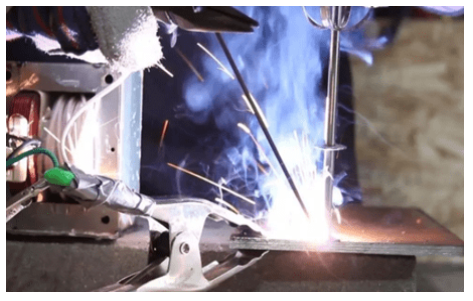Zhuzhou Weilai New Materials Techonology Co., Ltd
Tel:0731-22160654
Mobile:
+8615773363955(Mr. Duan)
+8615200507438(Ms.Zhang)
E-mail:sales@rheniumcn.com
Fax:0731-22160654
Address:No.103, Building 2, Tiantai
Jingu Industry Park, Tian Yuan
District,Zhuzhou,Hunan,China
The main principle of resistance welding is the Joule heating law, where the heat generated depends on four factors. These factors include the resistance of the metal, the applied current, the time of applying the current, and the heat loss generated through conduction and radiation.
In order to maximize the effectiveness of this principle, there are several factors that can affect the results of resistance welding, such as:
1. Welding current
This is the most critical element in resistance welding. When the welding current increases, it will cause the size of the welding nugget to increase proportionally. However, excessive current will lead to excessive discharge and damage to the electrodes.
2. Welding time
In resistance welding, the heat generated is directly related to the welding time. If you want to increase the welding time, it is necessary to use a high current to increase the size of the molten nucleus until it is similar to the electrode with the contact area. During the welding process, it is important to avoid extending the welding time and reduce the risk of electrode damage or sticking to the workpiece.

3. Welding pressure
To compress the workpiece in the welding area and ensure smooth flow of current, welding pressure is essential. Once welding begins and the current passes through, a low welding pressure can lead to discharge, and excessive contact resistance and rapid heating of the workpiece are also one of the reasons for discharge. On the other hand, when welding pressure is high, the contact area will also increase, leading to a decrease in contact resistance and current density, ultimately resulting in a decrease in heat and a decrease in welding nuggets.
4. Contact resistance
In resistance welding, the contact resistance generally decreases with the increase of temperature and proportionally with the increase of pressure. As is well known, the surface of all metals is very rough, therefore, an increase in welding stress can lead to an increase in contact pressure. Due to the deformation of the rough surface of the metal, an increase in contact pressure will lead to an increase in the total contact area of the interface, resulting in a decrease in contact resistance at the interface, thereby reducing heat generation and reducing the size of the melt nucleus.
5. Properties of Materials
Resistance welding dynamics refer to the characteristics of all materials that undergo changes in temperature. The electrical resistivity and thermal conductivity of welding materials can affect the generation and transfer of heat. Metals such as copper and silver have lower electrical resistivity and higher thermal conductivity, and when using these metals for welding, very little heat is generated. However, due to the low heat generated, it is extremely difficult to use resistance welding to combine these materials.
6. Surface coating
Surface coatings have two functions: one is to prevent internal corrosion, and the other is to serve as a substrate for further surface treatment. When the combination of materials to be processed is very complex, covering the material surface with a layer of coating can evenly distribute heat on the welding surface, making welding more effective.
7. Shape and size
Welding and current density are influenced by the shape of the electrode and the size of the workpiece.

Zhuzhou Weilai specializes in producing various resistance welding electrodes (tungsten embedded electrodes, molybdenum embedded electrodes, tungsten welding heads, molybdenum welding heads, etc.) and the raw materials required for electrodes such as pure tungsten, pure molybdenum, tungsten copper, tungsten alloys, etc. Bars and plates can be used for finished product processing. If you need finished products, you can produce them according to the drawings.
Address:
No.103, Building 2, Tiantai Jingu Industry Park,
Tian Yuan District,Zhuzhou, Hunan, China.